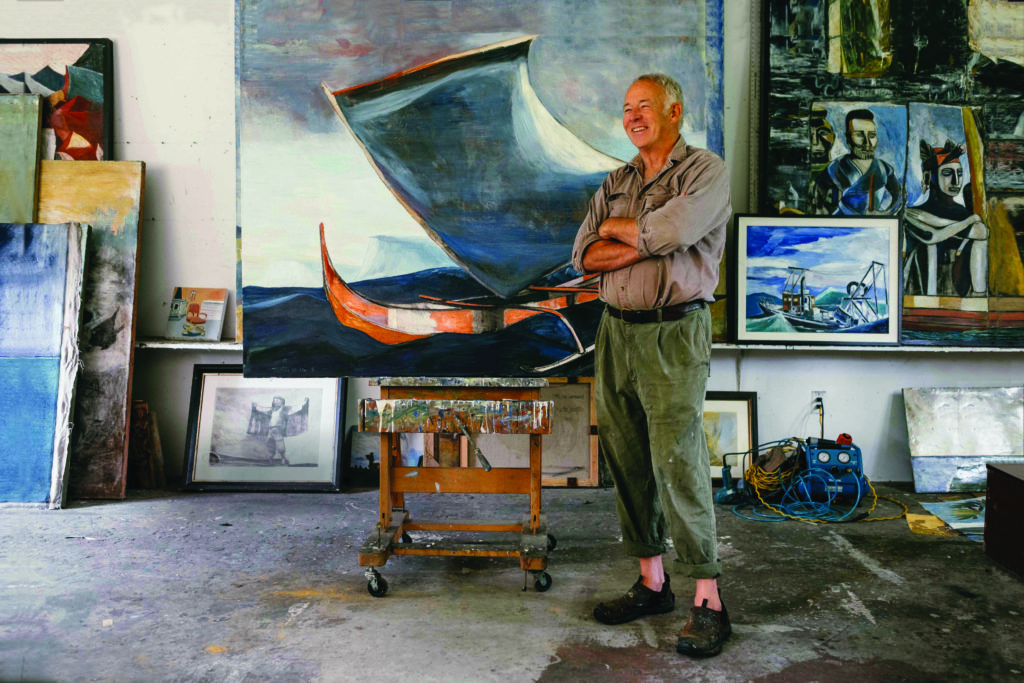
by Ray Rogers
“That used to be a swimming pool, now it’s a koi pond. Over there’s a chicken coop underneath all those vines. The neighbors have chickens too. They come over here. Their rooster especially—he’s banging all of our hens,” says the artist Paton Miller, walking from his classic, cedar-shingled house in Southampton to the big-as-a-barn artist studio out back where he’s been painting for the past 22 years.
Like most working artists, he has his painter’s uniform (he’s wearing paint-splattered shorts and sandals the day we meet), and a daily routine: he gets up early, makes coffee for himself and his wife, Nancy, and spends the day painting in the studio—with breaks for surfing, of course. Stand-up paddleboards jut out of the back of a truck in the driveway. “I could never live away from the ocean. I was surfing with dolphins just the other day, off Road A in Southampton.”
His love of the Hamptons was immediate when he arrived from Hawaii in 1974 with $40 in his pocket and a return ticket home. A scholarship to Southampton College kept him here longer than planned, and today he can’t imagine living anywhere else. He recalls being immediately taken with the area’s potato trucks and fishing vessels, like the one navigating choppy blue waters that’s depicted in his painting “Out of Shinnecock”; it’s the image that adorns this year’s Hamptons International Film Festival poster. (The original hangs in a collector’s home in nearby Shinnecock Hills.)
“Surfing, you sometimes see the boats coming and going, and they really struck me as iconic of the area. I often paint them because to me they’re symbols of a part of this area that I like very much, the farming and the fishing. I’m not the only one—it’s part of the charm.”
The poster is another career marker in a lifetime full of them. (Miller fondly recalls his debut show in the first gallery in Soho, attended by the likes of Andy Warhol and Keith Haring.) “I’ve always wanted to do the poster, especially having two sons who are now filmmakers,” he says. He’s getting into the film business himself—working with his sons on a forthcoming documentary, The Forger’s Club, about the dark underbelly of the art world. “Who knows, maybe it’ll end up in next year’s festival.”
What he appreciates most about the festival is that it brings together the diverse talents living in the area, something that’s motivated him personally over the years. “The East End is a creative community, and that is extremely important to me. I curate exhibitions every year at the Southampton Arts Center called East End Collected. What I do is a survey show of what’s happening out here. People often think really great work is a thing of the past or is happening somewhere else. But guess what? It’s happening here, now.”





